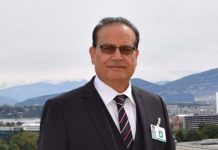20 delegations headed by Heads of State or Government attend the mega eventAs many as 20 delegations headed by Heads of State or Government attended the world cup matches in Brazil. The event was declared as a huge diplomatic success of Brazil. It was a rare scene to see a great number of foreign dignitaries gathered in Brazil on this occasion. The Brazil embassy in Islamabad made elaborate arrangements on the occasion which include publication of a magazine on Football published in English and Urdu, informative broachure about Brazilian cities, stadiums and names, photo exhibition title Football by the Brazilian photographer Jorge Rodrigues, opening reception for the photo exhibmtion with a penalty competition for guests, welcome ceremony for Pakistan Street Child team, appreciation ceremony in Lyiari, distribution of 1.300 footballs and other gifts for school and street children in Islamabad.
In order to make the Football World a great success, the Brazilian Government invested heavily in a complete new infra-structure program for these events, not only building better sports facilities, but mainly transforming the whole country, by investing in new roads, airports, telecommunications and cultural facilities. In order to achieve those goals, a broad and ambitious plan was set up.
Brazil will hosted the World Cup in 12 cities (Rio de Janeiro,Belo Horizonte, Brasília, Curitiba, Cuiabá, Fortaleza, Manaus, Natal, Porto Alegre, Recife, Salvador and São Paulo), against the usual number of 8, and major investments are being made to build or renovate stadiums, trough public-private partnerships in all of them. This strategy aimed at spreading the World Cup all over the very large Brazilian territory, so that as many municipalities as possible could experience the benefits of such event. The gains are not limited to new and modern arenas, which will count with high-technology lighting and sustainable use of energy, but will mostly be on the areas of urban mobility and economic profits from tourism that will accompany the matches.
Since the first day Brazil knew it was about to host those two megaevents, the Government looked beyond the immediate gains and sought to make huge structural investments that would stay as a positive legacy from the World Cup and the Olympics, as well as serve as a driver to foster economic and social development. To achieve that, in total, more than 16 billion dollars were invested.
The first stage of those investments contemplated 102 projects, involving stadiums, ports, airports and urban mobility. Around 11 billion dollars are destined to this areas. The rest of the 5 billion dollars will be directed to investments in telecommunications, tourism, security, health, defense and energy. Some details of each area are explained below.
Twelve stadiums were built or renovated in accordance with the FIFA pattern. They were all adapted to follow environmental and sustainable certifications, and were energy “smart”. Six of them were already built, and were used with a lot of success during the Confederations Cup matches. The Brazilian Government was not directly investing on the stadiums, which were being renovated or built under public-private-partnership agreements, but lent around 1.5 billion dollars trough is National Development Bank.
Thirteen airports, which were considered to be top priority for the World Cup and the Olympics, were expanded or renovated. Thirty new projects were approved, among the expansion of landing strips and control towers. More than 3.4 billion dollars were invested on the airports field, half of it being of public origin. After the renovations, the capacity of those 13 airports will almost double.
Host cities received many new projects to improve urban mobility. This was one of the key investment areas, as after the events those projects will improve people’s quality of life. For this area, almost 4.5 billion dollars are being invested, in projects that vary from Bus Rapid Transit to Light Rail vehicles.
Massive investments were made to improve the port infrastructure, a key element for the country continuous economic and social development.
The Brazilian National Development Bank lent more than 1 billion dollars to the private sector for the expansion of 15% of the hotel capacity of the country. Also, a program from the Ministry of Tourism is offering 44 different qualification and language courses for the workers of the tourism industry, totaling 240 thousand placements.
In this area, the main investments were directed to the expansion of the 4G network and fiber optic systems all over the country. It was estimated that the private sector would invest over 2 billion dollars for this technology in Brazil. Besides, the government, through it’s telecommunications company, implemeted the DWDM technology and 50 pops stations.
Almost a billion dollar were invested by the government to guarantee people’s security during the megaevents, including new equipment, training, aerial monitoring and the renovation of integrated centers of defense. Criminality in Brazil, especially in the biggest cities, has been declining in a steady and constant pace over the last decade (44% in Rio and 68% in São Paulo, for example).
To guarantee the energy supply during these megaevents, almost one billion dollars were invested in projects aiming at generation, transmission and distribution of energy.
Apart form this massive investment project, the revenues of those events will also be extremely positive for the Brazilian Economy. According to a study by the Brazilian Ministry of Sports, these investments will have a positive impact of extra 90 billion dollars to the Brazilian GDP in the next five years.
Besides, these events are expected to generate almost one million new jobs (including temporaries) and will help in the qualification of 240 thousand workers of the tourism industry. Brazil roughly received 600 thousand foreign tourists and 3 million internal tourists, who traveled inside the country to watch the world cup matches.











